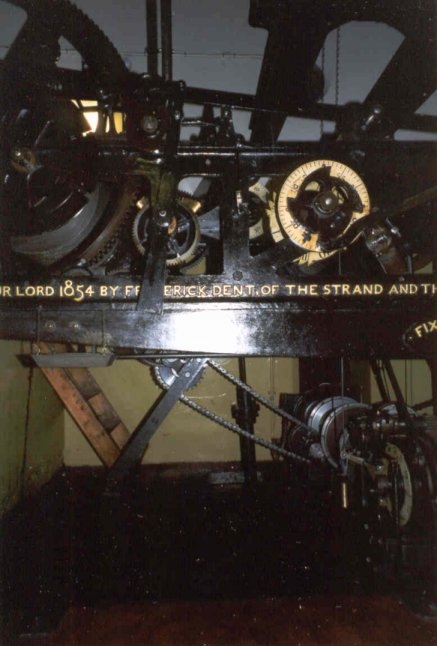|
|
|

View of clock movement Image courtesy of Kimberly Ennico |
The most obvious feature visible here is the brass hour wheel which forms part of the going train. From the pointer one can see that this photograph was taken at 25 minutes past the hour. (The wheel actually turns anti-clockwise.) Notice the four cams which rotate around this dial. These depress the lever coming from the chiming train and suddenly realease it every fifteen minutes, which triggers the chimes. To the left can be seen the winding barrel of the striking train and in front of it the notched countwheel (black) which controls the number of strokes of the hour bell. Directly below this can be seen a thick cable next to the the wall. This is the cable descending from the winding barrel to the |